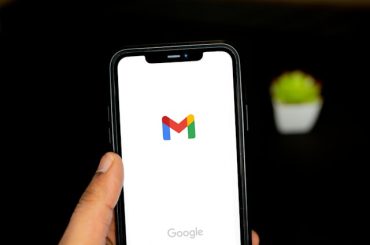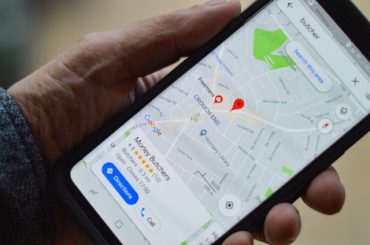Customer acquisition strategies are techniques and marketing tactics that businesses use to attract and convert new customers.
Here are some common customer or user acquisition strategies:
1. Paid advertising
Paid advertising is an important customer acquisition strategy, irrespective of the size of the business. Businesses can use paid advertising on platforms like Google Ads or Facebook Ads to target potential customers and drive website traffic.
Paid advertising, or pay-per-click (PPC) advertising, is a marketing strategy in which advertisers pay a fee each time one of their ads is clicked. It involves placing ads on search engine results pages, social media platforms, and other websites to reach a specific target audience.
PPC advertising typically involves bidding on keywords relevant to the advertiser’s product or service. When a user searches for those keywords, the advertiser’s ad may appear at the top or bottom of the search results page, depending on the bid amount and other factors.
PPC advertising can be an effective way to drive traffic to a website and increase brand awareness, but it can also be expensive and require a significant amount of time and resources to manage. Successful PPC campaigns require careful targeting, keyword selection, ad copywriting, and ongoing monitoring and optimization to ensure that the ads are delivering a positive return on investment.
Storytelling: The best strategy for brands
2. Content marketing
Content marketing refers to creating and distributing valuable, relevant, and consistent content to attract and retain a clearly defined audience, ultimately driving profitable customer action.
Creating valuable content, such as blog posts, videos, or podcasts, can attract potential customers and help build relationships.
Content marketing focuses on creating content that informs, educates, or entertains your target audience rather than directly promoting your products or services. This can include blog posts, videos, infographics, social media posts, podcasts, e-books, and more.
The benefits of content marketing are many. By creating high-quality content that resonates with your target audience, you can:
- Build brand awareness and establish yourself as an authority in your industry
- Increase website traffic and improve search engine rankings
- Generate leads and increase sales
- Nurture existing customers and encourage repeat business
- Improve customer engagement and loyalty
To be successful at content marketing, it’s important to have a solid understanding of your target audience and what type of content will resonate with them. It would help if you also had a content strategy in place, including a content calendar and a plan for distribution and promotion. Finally, measure the success of your content marketing efforts regularly and adjust your strategy as needed to achieve your goals.
3. Search engine optimization (SEO)
Optimizing your website for search engines can help improve your website’s ranking in search results, making it easier for potential customers to find you.
Search engine optimization (SEO) is the practice of improving the quantity and quality of website traffic by increasing the visibility of a website or a web page in search engine results pages (SERPs).
SEO aims to optimize a website’s content and structure so that search engines can better understand it and show it to people looking for relevant information or solutions. This is achieved by using techniques such as keyword research, on-page optimization, off-page optimization, and technical SEO.
- Keyword research involves identifying the words and phrases people use to search for information about your business or topic.
- On-page optimization involves optimizing the content and structure of your website to make it more search-engine friendly.
- Off-page optimization involves building links and creating content that helps to establish your website as a trusted authority in your niche.
- Technical SEO involves optimizing the technical aspects of your website, such as website speed, mobile-friendliness, and security, to improve its visibility in search results.
SEO is an ongoing process that requires regular monitoring and adjustment to keep up with changes in search engine algorithms and user behavior. It can take time to see the results of SEO efforts, but when done correctly, it can lead to increased website traffic, higher conversion rates, and improved overall online visibility.
4. Social media marketing:
We are living in that era where a business cannot survive without making social media platforms as critical customer/user acquisition strategies. Engaging with potential customers on social media platforms like Twitter, Facebook, or LinkedIn can help build brand awareness and drive traffic to your website.
Social media marketing is the practice of promoting products, services, or brands through social media platforms such as Facebook, Instagram, Twitter, LinkedIn, and YouTube. Social media marketing can include various activities such as creating and sharing content, running ads, engaging with followers, and analyzing data.
Social media marketing has become essential to digital marketing strategies, allowing businesses to reach and engage with their target audience more personally and interactively. Companies can build brand awareness, increase website traffic, generate leads, and drive sales using social media platforms.
To create an effective social media marketing strategy, businesses must identify their target audience, define their goals, choose the right platforms, create compelling content, and measure their performance regularly. It is important to note that social media marketing requires a consistent and long-term effort to achieve significant results.
5. Referral programs:
Encouraging your existing customers to refer friends or family to your business can effectively acquire new customers.
A referral program is a marketing strategy incentivizing existing customers to refer new customers to a business. Referral programs are a cost-effective way for companies to acquire new customers since the referral is made by a satisfied customer who already knows and trusts the brand.
Here are some key elements of referral programs:
- Incentives: Referral programs offer incentives to customers who refer new businesses. These incentives can include discounts, free products, or exclusive access to special offers.
- Referral Tracking: To ensure the referral program is effective, businesses must track the referrals. This is typically done through a unique referral link or code the existing customer can share with friends and family.
- Clear Guidelines: Businesses need to have clear guidelines for their referral program, including the terms and conditions of the program, how the incentives will be awarded, and any restrictions or limitations.
- Easy to Share: The referral program must be easy for existing customers to share with friends and family. This can be done through social media sharing, email, or messaging apps.
Overall, referral programs are a powerful marketing tool that can help businesses grow their customer base and increase customer loyalty.
6. Influencer marketing:
Partnering with influencers or micro-influencers in your industry can expose your brand to new audiences and attract potential customers.
Influencer marketing is a marketing strategy that involves partnering with individuals with a large following on social media platforms to promote a product, service, or brand. These individuals are known as influencers, and they can include celebrities, industry experts, bloggers, and other online personalities who significantly influence their followers.
Influencer marketing works by leveraging the influencer’s credibility and trust with their followers to promote products or services that feel authentic and genuine. Influencers typically create content, such as posts or videos, featuring the product or service and share it with their followers, who may be motivated to purchase.
Influencer marketing can effectively reach a highly targeted audience, build brand awareness, and drive sales. However, choosing the right influencers is important, ensuring that their content aligns with your brand values and messaging. It’s also important to comply with relevant advertising regulations, such as disclosing sponsored content.
7. Events and sponsorships:
Participating in or sponsoring events in your industry or local community can help you connect with potential customers and build relationships with them.
Events and sponsorships are two important components of marketing and branding strategies. Events refer to gatherings or occasions planned and organized for a specific purpose, such as product launches, conferences, festivals, and concerts. On the other hand, sponsorships are financial or in-kind contributions made by a company or individual to support an event, organization, or cause in exchange for exposure and brand recognition.
Events and sponsorships are effective marketing tools because they offer companies a unique opportunity to connect meaningfully with their target audience. Companies can generate awareness and promote their brand, products, or services by sponsoring an event or hosting their own. In addition, events and sponsorships can help companies establish themselves as industry leaders and build relationships with key stakeholders.
When selecting events to sponsor, companies should consider factors such as the attendees’ demographics, the event’s theme, and the level of exposure and engagement they can expect to receive. It’s also important to establish clear objectives for the sponsorship, such as increasing brand awareness, generating leads, or supporting a cause.
Overall, events and sponsorships can be powerful tools for companies looking to build brand awareness and connect with their target audience in a more personal way. However, it’s important to carefully evaluate each opportunity and ensure it aligns with the company’s overall marketing and branding goals.
8. Email marketing:
Sending regular newsletters or promotional emails to your email list can help keep your brand in mind and encourage customers to purchase.
Email marketing is a digital marketing strategy that involves sending commercial messages, newsletters, promotions, and other marketing content to a list of subscribers via email. Email marketing aims to build and maintain customer relationships, increase brand awareness, promote products and services, and ultimately drive sales.
To create an effective email marketing campaign, it is important to have a well-maintained email list, a clear message, and a solid call to action. Personalization, segmentation, and automation can also improve the effectiveness of email marketing.
Some tips for successful email marketing include:
- Building an engaged email list by offering sign-up incentives and making the process easy.
- Segmenting your email list to send targeted messages based on subscribers’ interests, behaviors, or demographics.
- Creating visually appealing and mobile-responsive email templates that align with your brand’s aesthetic.
- Crafting compelling subject lines that grab subscribers’ attention and entice them to open your email.
- Including clear calls-to-action that encourage subscribers to take action, such as making a purchase or visiting your website.
- Tracking and analyzing email metrics, such as open rates, click-through rates, and conversions, to refine and improve your email marketing strategy over time.
Overall, email marketing can be a highly effective way to reach and engage with customers, but it requires careful planning, execution, and monitoring to achieve success.
9. Affiliate marketing:
Partnering with other businesses or individuals to promote your products or services in exchange for a commission can effectively acquire new customers.
Affiliate marketing is a type of performance-based marketing where a company or business rewards one or more affiliates for each customer or visitor brought about by the affiliate’s marketing efforts. Affiliates promote the company’s products or services through various channels, such as blogs, social media, websites, and email marketing, and earn a commission for every sale, lead, or click that results from their promotion.
The commission rates vary depending on the company and the affiliate program. Some companies pay a fixed commission per sale, while others offer a percentage of the total sale amount. Affiliate marketing can be an effective way for businesses to reach a wider audience and increase sales while also providing a source of income for affiliates.
Many different affiliate networks and platforms are available, such as Amazon Associates, ClickBank, Commission Junction, and ShareASale, which allow businesses to manage their affiliate programs and for affiliates to find and promote products or services that match their interests and niche.
10. Sales promotions and discounts:
Offering sales promotions or discounts to new customers can incentivize them to try your product or service.
Sales promotions and discounts are marketing tactics or customer acquisition strategies businesses use to stimulate sales and attract customers. They are often used during specific periods, such as holidays, seasons, or special events. The following are some common types of sales promotions and discounts:
- Percentage discount: This discount is given as a percentage of the original price. For example, a store might offer a 20% discount on all items.
- Dollar amount discount: This discount is given as a fixed dollar amount. For example, a store might offer a $10 discount on a purchase of $50 or more.
- Buy-one-get-one-free (BOGO) promotion: This is a promotion where customers receive a free item when they purchase one. For example, a store might offer buy-one-get-one-free on a particular product.
- Limited-time offer: This is a promotion that is only available for a short period of time. For example, a store might offer a 24-hour flash sale or a weekend sale.
- Rebate: This is a promotion where customers receive money back after making a purchase. For example, a store might offer a $50 rebate on a particular product.
- Loyalty programs: These are programs where customers earn rewards or discounts for repeat purchases. For example, a store might offer a discount or free item after a certain number of purchases.
- Bundle promotions: These are promotions where customers receive a discount for purchasing multiple items together. For example, a store might offer a discount for buying a bundle of products.
Sales promotions and discounts can be effective ways for businesses to increase sales and attract new customers. However, using them strategically and avoiding overusing them is important, as this can decrease perceived value and profitability.











